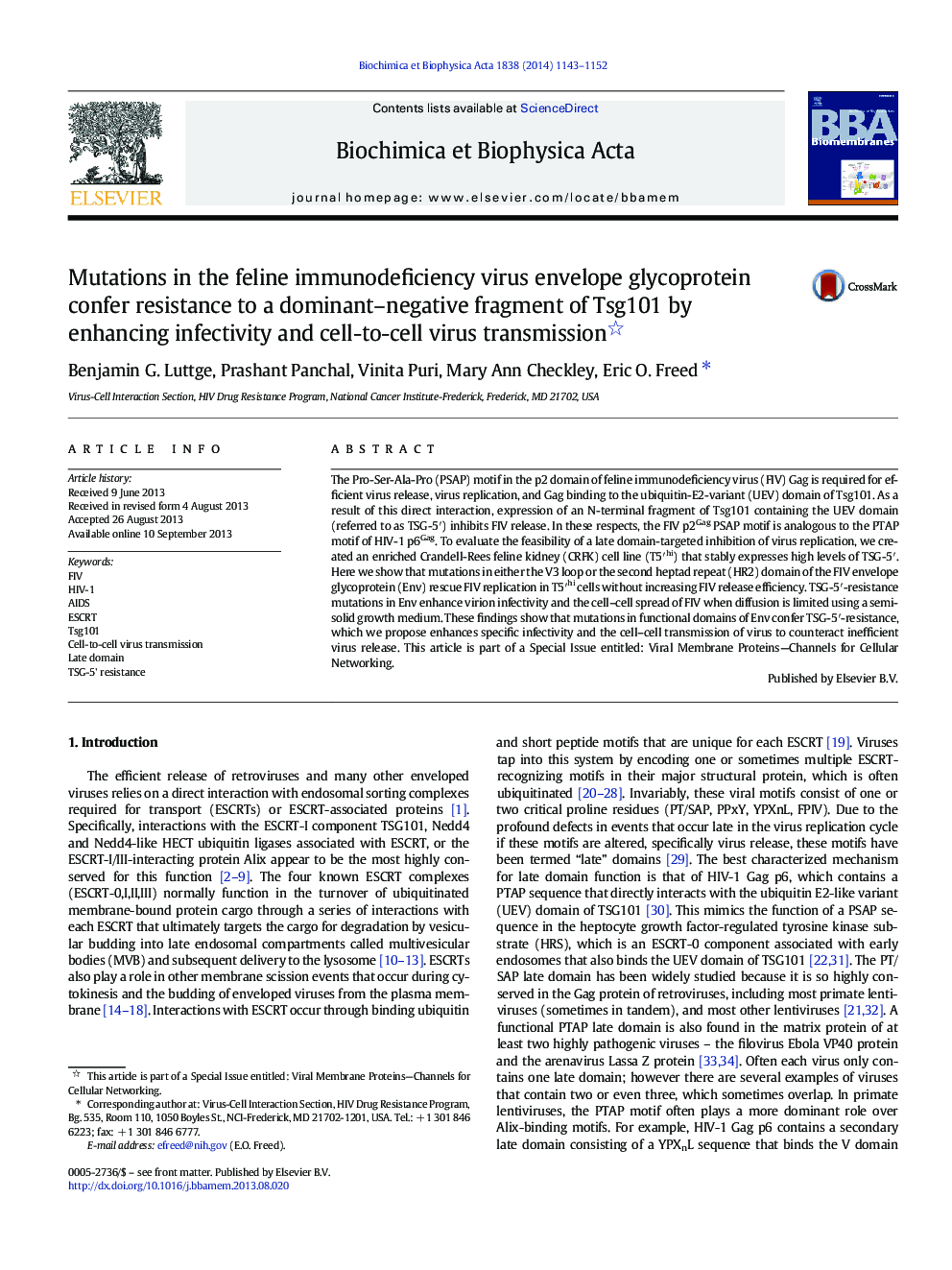| Article ID | Journal | Published Year | Pages | File Type |
|---|---|---|---|---|
| 1944163 | Biochimica et Biophysica Acta (BBA) - Biomembranes | 2014 | 10 Pages |
•Overexpression of dominant-negative Tsg101 fragment (TSG-5′) inhibits FIV budding.•Stable expression of TSG-5′ in the feline cell line CRFK impairs FIV replication.•Passage of FIV in TSG-5′-expressing cells leads to TSG-5′-resistant FIV mutants.•TSG-5′ resistance mutations all map to the FIV envelope glycoprotein (Env).•Env mutations conferring TSG-5′ resistance enhance cell–cell transfer and infectivity.
The Pro-Ser-Ala-Pro (PSAP) motif in the p2 domain of feline immunodeficiency virus (FIV) Gag is required for efficient virus release, virus replication, and Gag binding to the ubiquitin-E2-variant (UEV) domain of Tsg101. As a result of this direct interaction, expression of an N-terminal fragment of Tsg101 containing the UEV domain (referred to as TSG-5′) inhibits FIV release. In these respects, the FIV p2Gag PSAP motif is analogous to the PTAP motif of HIV-1 p6Gag. To evaluate the feasibility of a late domain-targeted inhibition of virus replication, we created an enriched Crandell-Rees feline kidney (CRFK) cell line (T5′hi) that stably expresses high levels of TSG-5′. Here we show that mutations in either the V3 loop or the second heptad repeat (HR2) domain of the FIV envelope glycoprotein (Env) rescue FIV replication in T5′hi cells without increasing FIV release efficiency. TSG-5′-resistance mutations in Env enhance virion infectivity and the cell–cell spread of FIV when diffusion is limited using a semi-solid growth medium. These findings show that mutations in functional domains of Env confer TSG-5′-resistance, which we propose enhances specific infectivity and the cell–cell transmission of virus to counteract inefficient virus release. This article is part of a Special Issue entitled: Viral Membrane Proteins—Channels for Cellular Networking.
Graphical abstractFigure optionsDownload full-size imageDownload high-quality image (181 K)Download as PowerPoint slide
